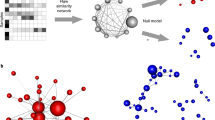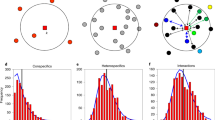Abstract
AYALA1 demonstrated experimentally that two species of Drosophila competing for limited food and space can coexist. Based on this evidence, he rejected the principle of competitive exclusion (Gause's principle), which states that two species cannot coexist indefinitely if they compete for the same limited resources; that is, if they occupy the same ecological niche. He suggests that competitive coexistence in Drosophila is allowed by (1) differences between the two species in competitive fitness of the larval and adult stages, and (2) the inverse dependency of each species' competitive ability on its relative frequency or population density2. In his two articles, Ayala reviews and cites the literature pertaining to competitive exclusion in animals.
This is a preview of subscription content, access via your institution
Access options
Subscribe to this journal
Receive 51 print issues and online access
$199.00 per year
only $3.90 per issue
Buy this article
- Purchase on Springer Link
- Instant access to full article PDF
Prices may be subject to local taxes which are calculated during checkout
Similar content being viewed by others
References
Ayala, F. J., Nature, 224, 5224 (1969).
Ayala, F. J., Science, 171, 3973 (1971).
Leak, W. B., Ecology, 51, 5 (1970).
See articles by Marquis, D. A. ; Tubbs, C. H. ; and Godman, R. M., et al., in Birch Symposium Proceedings (Northeastern Forest Experiment Station, Durham, New Hampshire, 1969).
Author information
Authors and Affiliations
Rights and permissions
About this article
Cite this article
LEAK, W. Competitive Exclusion in Forest Trees. Nature 236, 461–463 (1972). https://doi.org/10.1038/236461a0
Received:
Issue Date:
DOI: https://doi.org/10.1038/236461a0
Comments
By submitting a comment you agree to abide by our Terms and Community Guidelines. If you find something abusive or that does not comply with our terms or guidelines please flag it as inappropriate.



